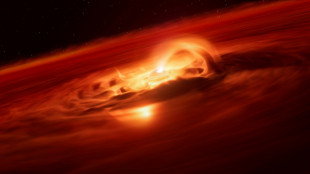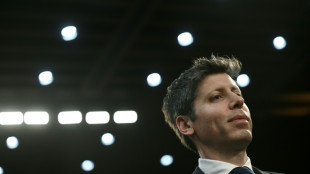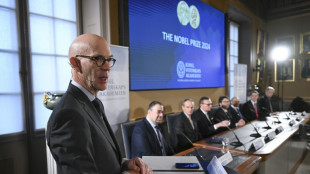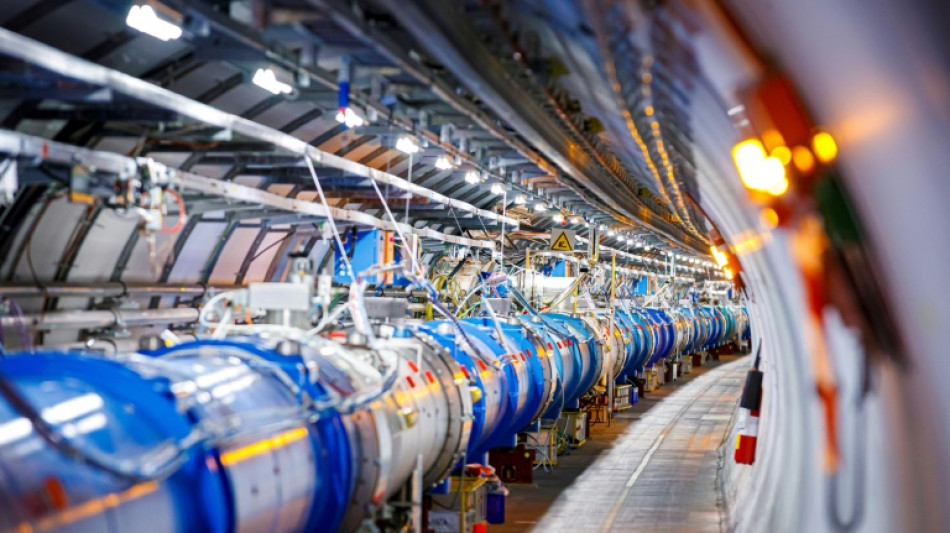
-
 Death toll from Indonesia school collapse rises to 37
Death toll from Indonesia school collapse rises to 37
-
OPEC+ meets with future oil production hanging in the balance
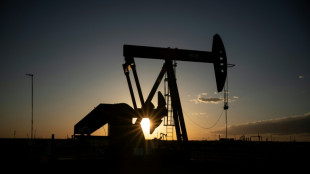
-
 Dodgers down Phillies on Hernandez homer in MLB playoff series opener
Dodgers down Phillies on Hernandez homer in MLB playoff series opener
-
Philadelphia down NYCFC to clinch MLS Supporters Shield

-
 Syria selects members of first post-Assad parliament in contested process
Syria selects members of first post-Assad parliament in contested process
-
Americans, Canadians unite in battling 'eating machine' carp
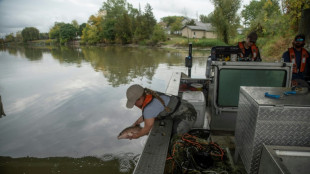
-
 Negotiators due in Cairo for Gaza ceasefire, hostage release talks
Negotiators due in Cairo for Gaza ceasefire, hostage release talks
-
Trump authorizes troops to Chicago as judge blocks Portland deployment
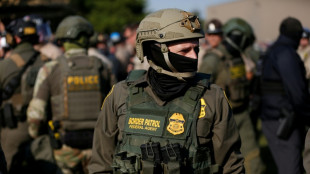
-
 Wallabies left ruing missed chances ahead of European tour
Wallabies left ruing missed chances ahead of European tour
-
Higgo stretches PGA Tour lead in Mississippi

-
 Blue Jays pummel Yankees 10-1 in MLB playoff series opener
Blue Jays pummel Yankees 10-1 in MLB playoff series opener
-
Georgia ruling party wins local polls as mass protests flare

-
 Depoortere stakes France claim as Bordeaux-Begles stumble past Lyon
Depoortere stakes France claim as Bordeaux-Begles stumble past Lyon
-
Vinicius double helps Real Madrid beat Villarreal

-
 New museum examines family life of Mexican artist Frida Kahlo
New museum examines family life of Mexican artist Frida Kahlo
-
Piccioli sets new Balenciaga beat, with support from Meghan Markle

-
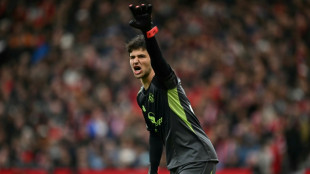 Lammens must be ready for 'massive' Man Utd scrutiny, says Amorim
Lammens must be ready for 'massive' Man Utd scrutiny, says Amorim
-
Arteta 'not positive' after Odegaard sets unwanted injury record

-
 Slot struggles to solve Liverpool problems after third successive loss
Slot struggles to solve Liverpool problems after third successive loss
-
Netanyahu hopes to bring Gaza hostages home within days as negotiators head to Cairo

-
 Ex-NFL QB Sanchez in hospital after reported stabbing
Ex-NFL QB Sanchez in hospital after reported stabbing
-
Liverpool lose again at Chelsea, Arsenal go top of Premier League

-
 Liverpool suffer third successive loss as Estevao strikes late for Chelsea
Liverpool suffer third successive loss as Estevao strikes late for Chelsea
-
Diaz dazzles early and Kane strikes again as Bayern beat Frankfurt

-
 De Zerbi living his best life as Marseille go top of Ligue 1
De Zerbi living his best life as Marseille go top of Ligue 1
-
US envoys head to Mideast as Trump warns Hamas against peace deal delay

-
 In-form Inter sweep past Cremonese to join Serie A leaders
In-form Inter sweep past Cremonese to join Serie A leaders
-
Kolisi hopes Rugby Championship success makes South Africa 'walk tall' again

-
 Ex-All Black Nonu rolls back the years again as Toulon cruise past Pau
Ex-All Black Nonu rolls back the years again as Toulon cruise past Pau
-
Hundreds of thousands turn out at pro-Palestinian marches in Europe

-
 Vollering powers to European women's road race title
Vollering powers to European women's road race title
-
Struggling McLaren hit bump in the road on Singapore streets
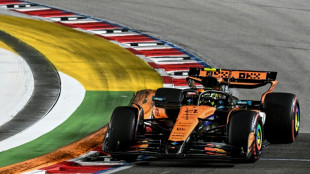
-
 'We were treated like animals', deported Gaza flotilla activists say
'We were treated like animals', deported Gaza flotilla activists say
-
Czech billionaire ex-PM's party tops parliamentary vote
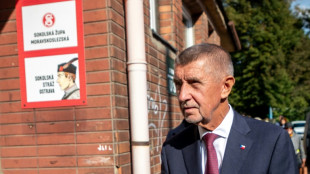
-
 Trump enovys head to Egypt as Hamas agrees to free hostages
Trump enovys head to Egypt as Hamas agrees to free hostages
-
Arsenal go top of Premier League as Man Utd ease pressure on Amorim

-
 Thousands attend banned Pride march in Hungarian city Pecs
Thousands attend banned Pride march in Hungarian city Pecs
-
Consent gives Morris and Prescott another memorable Arc weekend

-
 Georgian police fire tear gas as protesters try to enter presidential palace
Georgian police fire tear gas as protesters try to enter presidential palace
-
Vollering powers to European road race title

-
 Reinach and Marx star as Springboks beat Argentina to retain Rugby Championship
Reinach and Marx star as Springboks beat Argentina to retain Rugby Championship
-
Russell celebrates 'amazing' Singapore pole as McLarens struggle
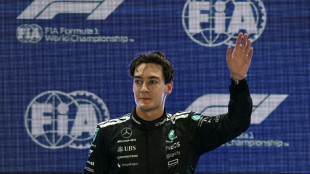
-
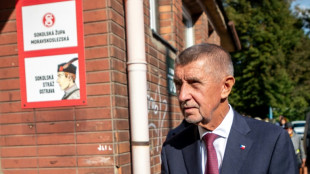 Czech billionaire ex-PM's party leads in parliamentary vote
Czech billionaire ex-PM's party leads in parliamentary vote
-
South Africa edge Argentina to retain Rugby Championship

-
 'Everyone's older brother': Slipper bows out in Wallabies loss
'Everyone's older brother': Slipper bows out in Wallabies loss
-
Thousands rally in Georgia election-day protest

-
 Sinner starts Shanghai defence in style as Zverev defies toe trouble
Sinner starts Shanghai defence in style as Zverev defies toe trouble
-
Russell takes pole position for Singapore Grand Prix as McLaren struggle
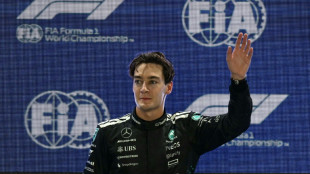
-
 Robertson praises All Blacks 'grit' in Australia win
Robertson praises All Blacks 'grit' in Australia win
-
Government, protesters reach deal to end unrest in Pakistan's Kashmir
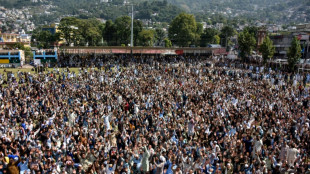

Large Hadron Collider revs up to unprecedented energy level
Ten years after it discovered the Higgs boson, the Large Hadron Collider is about to start smashing protons together at unprecedented energy levels in its quest to reveal more secrets about how the universe works.
The world's largest and most powerful particle collider started back up in April after a three-year break for upgrades in preparation for its third run.
From Tuesday it will run around the clock for nearly four years at a record energy of 13.6 trillion electronvolts, the European Organisation for Nuclear Research (CERN) announced at a press briefing last week.
It will send two beams of protons -- particles in the nucleus of an atom -- in opposite directions at nearly the speed of light around a 27-kilometre (17-mile) ring buried 100 metres under the Swiss-French border.
The resulting collisions will be recorded and analysed by thousands of scientists as part of a raft of experiments, including ATLAS, CMS, ALICE and LHCb, which will use the enhanced power to probe dark matter, dark energy and other fundamental mysteries.
- 1.6 billion collisions a second -
"We aim to be delivering 1.6 billion proton-proton collisions per second" for the ATLAS and CMS experiments, CERN's head of accelerators and technology Mike Lamont said.
This time around the proton beams will be narrowed to less than 10 microns -- a human hair is around 70 microns thick -- to increase the collision rate, he added.
The new energy rate will allow them to further investigate the Higgs boson, which the Large Hadron Collider first observed on July 4, 2012.
The discovery revolutionised physics in part because the boson fit within the Standard Model -- the mainstream theory of all the fundamental particles that make up matter and the forces that govern them.
However several recent findings have raised questions about the Standard Model, and the newly upgraded collider will look at the Higgs boson in more depth.
"The Higgs boson is related to some of the most profound open questions in fundamental physics today," said CERN director-general Fabiola Gianotti, who first announced the boson's discovery a decade ago.
Compared to the collider's first run that discovered the boson, this time around there will be 20 times more collisions.
"This is a significant increase, paving the way for new discoveries," Lamont said.
Joachim Mnich, CERN's head of research and computing, said there was still much more to learn about the boson.
"Is the Higgs boson really a fundamental particle or is it a composite?" he asked.
"Is it the only Higgs-like particle that exists -- or are there others?"
- 'New physics season' -
Past experiments have determined the mass of the Higgs boson, as well as more than 60 composite particles predicted by the Standard Model, such as the tetraquark.
But Gian Giudice, head of CERN's theoretical physics department, said observing particles is only part of the job.
"Particle physics does not simply want to understand the how -- our goal is to understand the why," he said.
Among the Large Hadron Collider's nine experiments is ALICE, which probes the matter that existed in the first 10 microseconds after the Big Bang, and LHCf, which uses the collisions to simulate cosmic rays.
After this run, the collider will come back in 2029 as the High-Luminosity LHC, increasing the number of detectable events by a factor of 10.
Beyond that, the scientists are planning a Future Circular Collider -- a 100-kilometre ring that aims to reach energies of a whopping 100 trillion electronvolts.
But for now, physicists are keenly awaiting results from the Large Hadron Collider's third run.
"A new physics season is starting," CERN said.
I.Meyer--BTB


